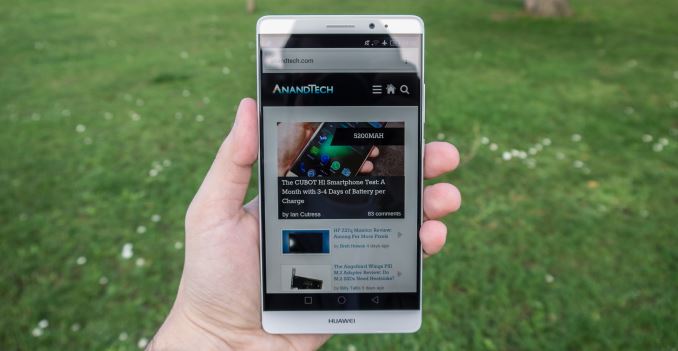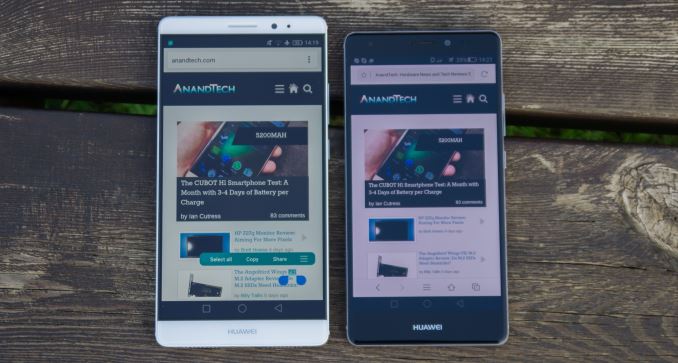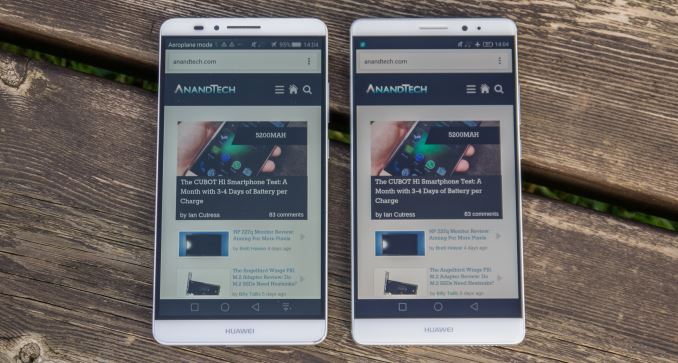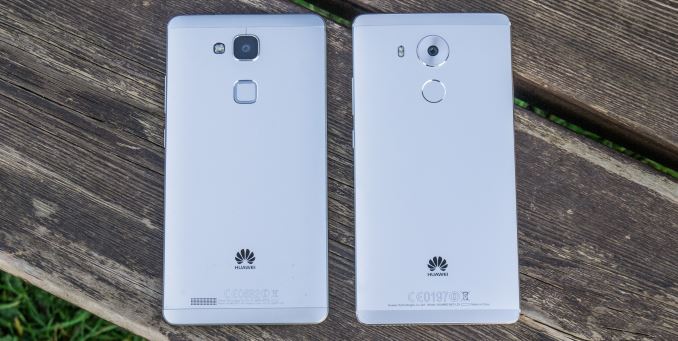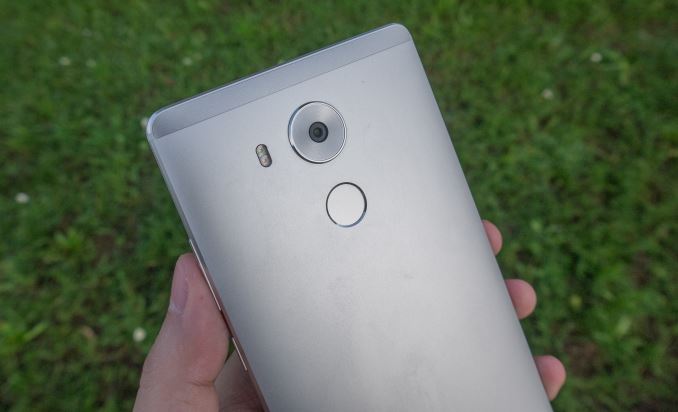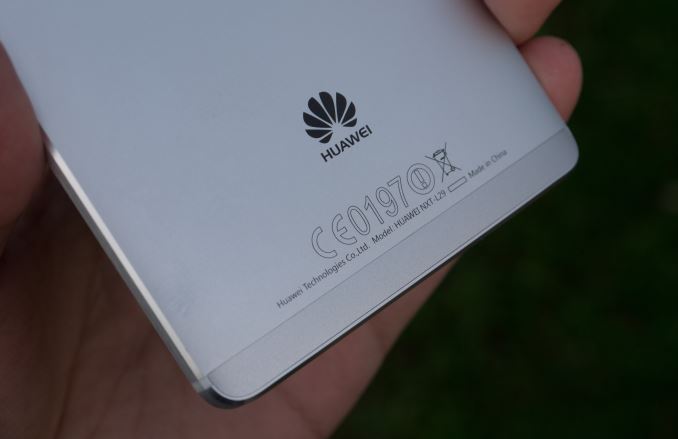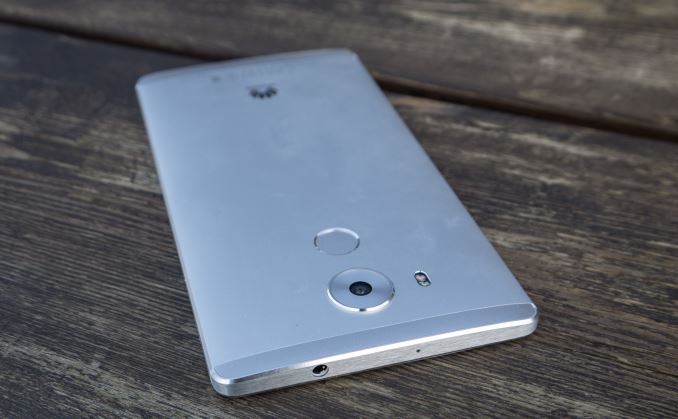Samsung officially unveiled its sixth-generation Galaxy Note phablet, the Galaxy Note 7, on August 2 2016 at one of its special "Samung Unpacked" events in New York, USA.
The latest Galaxy Note has skipped a number as Samsung allegedly wanted to keep the name consistent with the Galaxy S7 flagship series.

The new 5.7in Android-based phablet has, of course, been the subject of much gossip, rumours, and leaks ahead of its official launch. Although it's quickly becoming a tech-journo cliche, it's nonetheless true once again with the Galaxy Note 7 that with the wraps taken off there are not many surprises following a long trail of rumours which have revealed, mostly accurately, near every detail of the Galaxy Note 7.
Samsung’s next BIG THING to hit up the rumour mill will be the samsung galaxy s8 flagship, which is scheduled for launch inside early 2017 in its usual spot - likely a day or two ahead of MWC 2017 in late February or early March. However, in 2017 there is a MASSIVE potential curveball on the cards and it goes by the name of Samsung Galaxy X.
Why’s it a curveball? Simple: the galaxy x — which is believed to feature multiple models — will be the first commercial handsets that are completely flexible, meaning you will be able to fold and flex them. Samsung has been developing this tech for years, and in 2017 it will finally be ready for public consumption.
How the Galaxy X will effect the Galaxy S8 remains to be seen. Will it replace it? That doesn’t seem likely given how much sway Samsung’s Galaxy S brand commands in today’s mobile space. What’s more like is that it will be a side-brand like the Galaxy Note series. But if the rumours ring true and the Galaxy X is a truly flexible handset the reaction from consumers could be HUGE.
I mean, the status-quo of mobile design hasn’t really changed since 2007, save for the advent of ever-larger displays. The Galaxy X and the technology behind it stands to seriously shake things up on the mobile front by showing consumers that they can have phones that change shape, flex and roll-up. I mean, just think about that for a second — it’s HUGE. And, importantly, it’d give Samsung a huge marketing advantage of Apple and pretty much everybody else in the space.
Interestingly, it seems the Galaxy Note 7 may be indicating a product shift for Samsung; it's the first Galaxy handset with a curved EDGE display that isn't explicitly named with the EDGE moniker bolted on the end and, what's more, it has been launched solo, without a flat-screen alternative model, like the Galaxy S6 and Galaxy S7 series. This has been enough on its own to get punters speculating about the possibility that all future Samsung flagship models may be single-model launches with a wholesale shift to curved EDGE displays, and without the need anymore to flag the feature in the naming convention, as it's now a familiar fixture for Galaxy fans.
Following the launch of the Galaxy Note 7, some new info gives further weight to this line of thought, Samsung's head of mobile, Dong-jin Koh, spoke to the korea herald during an interview in New York after the Note 7 event, where he said, "Samsung has considered that it would make the edge display as the identity of the Galaxy S smartphone lineup if the company can provide consumers differentiated user experience through software and user-friendly functions (for the curved screen)."
However, with the Galaxy X waiting in the wings with an innovative new form factor, we are left to wonder how long the fixed-curvature of the EDGE display will be around before fully flexible and folding OLED phones dominate the Samsung Galaxy portfolio.
Samsung Galaxy Note 7 Recall Issued Over Battery Fire Issue: Sales Put On Hold
Oh dear. Things aren't looking too great for the Galaxy Note 7 right now. Following its expected enthusiastic launch and reception, little problems are starting to crawl out of the woodwork. First we heard how the Galaxy Note 7's S-Pen stylus could become jammed in its containment slot, and then reports started bleeding out that the handset was catching fire.
Initially we regarded this somewhat cautiously, as the handsets catching fire when consumers use dodgy third-party chargers are not at all unusual. However, it seems this is the real deal, this is not down to user error and Samsung has now issued some statements on the problem, as well as issuing a recall and temporarily halting sales. This is sure to put a damper on Samsung's bottom line and there are already reports of investor concerns and share prices dropping in reaction - a Reuters report claims the firm's market share value dropped by as much as $7bn.
Samsung's initial response from a spokesperson said, "In response to questions on Galaxy Note7, we are conducting a thorough inspection with our partners. We will share the findings as soon as possible. Samsung is fully committed to providing the highest quality products to our consumers."
Following this, the firm has now revealed more details.
"As of Sept. 1, a total of 35 claims were registered with Samsung's service centers at home and abroad. Only 24 units on a scale of 1 million were affected by the battery problem. By putting our top priority on customer safety, we've decided to halt sales [of Galaxy Note 7] and offer new replacement handsets to all customers."
So yes, you can get a replacement handset. According to reports , Samsung designed the Galaxy Note 7 battery cell, but the production was delegated to third parties, it's claimed one of these third party manufacturers has produced the batteries present in faulty units.
Here's what the FAA had to say on the matter. Spoiler: it isn't good -- a ban could be enacted.
“The FAA and the Pipeline and Hazardous Materials Safety Administration are working on guidance related to this issue,” an FAA spokesperson told the site. “If the device is recalled by the manufacturer, airline crew and passengers will not be able to bring recalled batteries or electronics that contain recalled batteries in the cabin of an aircraft, or in carry-on and checked baggage.”
Samsung Galaxy Note 7 Recall "Heartbreaking" Says Exec
As of September 5 details have emerged that Samsung has already shipped 2.5 million Galaxy Note 7 handsets which will need to be recalled as part of the exploding battery debacle. The incident is sure to be financially damaging for Samsung, a downward turn following on from the firm's positive Q1 and Q2 sales.
Following the issues with the Galaxy Note 7 Samsung market share value has also taken a hit after it climbed from Galaxy S7 performance. In all, it's not too surprising if the climate around Samsung is a slightly depressive one, when quizzed on the recall's financial impact on the company, Samsung's mobile chief Dong-jin Koh said it would be a "heartbreaking amount", according to Bloomberg.
Naturally, precise figures have not been given, but analysts predict at least $1bn would be a realistic estimate. But while that's a lot of cash to you and I, to Samsung that only represents around 5% of the firm's net income for 2016, sure, this is not a figure you want to be trotting out to shareholders as any negative isn't what they want to hear, but still, it's not the end of the world for Samsung in the grand scheme.
Samsung Galaxy Note 7 Ditching Samsung SDI Battery Cells
According to September 6 reports, Samsung has identified that the faulty cells which have caused Galaxy Note 7 explosions came from its own subsidiary; Samsung SDI. Apparently Samsung SDI produced as many as 70% of all the cells in produced Galaxy Note 7 units so far. Word from the
Korea Herald and
Wall Street Journal suggests that, on top of the recall, Samsung has decided it will no longer use Samsung SDI batteries for the Galaxy Note 7. Unnamed spokespersons are quoted as saying; "
As a follow-up of the battery issue, we decided to temporally stop using Samsung SDI’s battery for Galaxy Note 7."
The remaining 30% of batteries were produced by Hong Kong-based Amperex Technology, itself part of the Japanese TDK Corporation. Amperex has stated that the battery cells it produced were only used in Galaxy Note 7 units distributed in China, which is the only region where the recall has not been implemented.
Samsung Galaxy Note 7 Availability In Europe "Limited" Says Exec
Following reports of delayed release dates in multiple regions (including Benelux, Russia, Ukraine, and Malaysia) a Samsung exec has stated that the firm is capping pre-orders in Europe due to "unprecedented" demand.
Samsung's vice president of mobile for UK and Ireland, Conor Pierce, said,"Market reaction, combined with extremely positive feedback from our carrier and retail partners, indicates that the Note 7 will exceed our original sales forecasts for the region by some distance."
"As such, the number of preorder units will be limited due to the unprecedented demand," he added.
At time of writing (13:54, August 17) Samsung's UK-facing
webstore lists both blue and black colour variants as out of stock, and apparently has done since around 10.30am in the morning, according to
CNET. The "limited" distribution is clearly an indication that Samsung hasn't produced enough units to cater to the HYPE around this phablet, and Samsung now estimates the Galaxy Note 7 sales will exceed its predecessor, although it's not clear whether the firm means the Galaxy Note 5 which only went on sale in North America and Asia, or the Galaxy Note 4, which was the last global launch in the series.
Samsung Galaxy Note 7 Pre-Orders Begin With UK Retailers
While pre-orders from Samsung's official outlets and the firm's own webstore have not yet begun, third-party retailers have now started taking pre-orders on the phablet. First up is Carphone Warehouse, which is selling pre-orders via its
online webstore. Pre-orders made via Carphone Warehouse before August 30 will also net you a free 2016 Samsung Gear VR headset; the firm is also guaranteeing a September 2 delivery date. At present, CW isn't offering a SIM-free price for buying the phone straight up, but it is available on contract tariffs from £57 per month. For a full list of tariffs
click here.
If you’re invested in Samsung and a future-oriented type of person then
you NEED to check out Samsung’s SmartThings, which is essentially the company’s play for the IOT space. Samsung has recently cut the price of its entry-level Samsung SmartThings Hub, so getting up and running with your own personal IOT network has never been easier.
Samsung Confrims Android 7.0 Nougat Update Schedule - Update Due In 2-3 Months!
Samsung has now confirmed its plans to update the Galaxy Note 7 phablet, which launched with Android 6.0.1 Marshmallow onboard, up to the latest Android 7.0 Nougat build within "two to three months," according to a statement made by the firm's mobile business chief, Dong-jin Koh. In other words, Android Nougat will land on the Galaxy Note 7 by October or November at the latest.
The Korea Times reports that Koh also said "
It is very important for us to offer up-to-date information with the new OS, but what's more crucial is to build a stable and seamless platform for users. That's why we are planning to do enough beta testing before any OS updates."
Samsung Confirms Galaxy Note 7 6GB RAM & 128GB Storage As China Exclusive!
Well this is annoying! Samsung has now confirmed that the previously leaked and rumoured Galaxy Note 7 variant with 128GB of onboard storage and 6GB RAM will be released, but only in China! Samsung's mobile chief Dong-jin Koh, spoke to reporters at the firm's Galaxy Note 7 follow-up launch event in Seoul, South Korea.
The Korea Herald in an August 11 report, says that according to Koh Samsung is "reviewing" the rollout of this higher-capacity, higher-RAM variant in China because rival smartphone manufacturers in China are "
aggressively doing marketing with high-capacity memory," in the local market. So, what it sounds like is a 6GB RAM/128GB model was always planned, then dropped, then re-considered for China because apparently the Chinese market can't get enough of high-capacity storage? WTF? Not sure if you guys have noticed but there's plenty of 128GB Apple iPhones getting sold in North America and Europe! Following the disastrous move of only launching the Galaxy Note 5 in North America and Asia, we would have thought Samsung had learned this kind of exclusivity is a bad idea. Perhaps we will see a launch later for other global regions, but we remember saying something similar with the Note 5 and that never materialised, so on this front we wouldn't hold our breath.
Below we'll include our published coverage of previous rumours on the subject for the record:
Some pundits were a little shocked during the Galaxy Note 7 announcement when it emerged that Samsung was only revealing one storage variant for the phablet with 64GB of storage and 4GB of RAM. Recently there's been a push for higher storage models on flagship phones, with Apple raising its onboard storage up to 128GB, and with a phablet device with a focus on productivity, many expected the Note 7 would follow suit. There were also heavy rumours ahead of the launch for 6GB of RAM inside the Note 7.
Well, now following the launch, there's some evidence that a 128GB model with 6GB RAM may indeed exist. Chinese certification authority TENAA recently updated its listing for the Galaxy Note 7 with a 128GB memory and 6GB RAM variant, and if it's being certified in this way then it's pretty certain it will see a release. But the big question there is when? And perhaps more importantly where? So far it has only appeared on TENAA making us wonder if it will be limited to distribution in China. Only time will tell if a wider circulation will occur.
Yet more evidence has emerged on August 9 that China, at the very least, will be getting a 128GB storage/6GB RAM Galaxy Note 7 handset. This time it's a carrier network preparing to launch the new model, complete with pricing. Emerging via Chinese blogging and social network channels (Weibo) insiders with an unnamed Chinese network leaked details that pre-orders will start on August 26 and the phones would go on-sale on September 2, with the price set at 6088 yuan ($912), versus the 64GB/4GB RAM model at 5688 yuan ($853), a small difference in price which, frankly, doesn't sound at all realistic. Still, that doesn't mean the new model isn't real and isn't coming to China pretty soon - but the big question remains; will this be a China exclusive? We hope not, and if so it is a stupidity of similar proportions to the Galaxy Note 5 getting a limited distribution last year.
Samsung Galaxy Note 7: Design & Display
First and foremost is the fact that it is indeed called the Galaxy Note 7 not the Galaxy Note 7 EDGE (and not the Galaxy Note 6) in spite of also having an EDGE display with curved sides, just like the Galaxy S7 EDGE...but bigger.
It’s a Super AMOLED setup (no surprise there) with a QHD resolution just as tipsters predicted. You may recall DisplayMate studied the Galaxy S7 EDGE’s display technology and found it to be the best on the market bar none, on all fronts including brightness, sharpness, contrast, lowest reflective-ness, and more – it would appear Samsung has transferred that very same tech to the larger format. On top of that, Samsung has also borrowed some tricks from its 4K TV business, namely an HDR mode which allows for more vivid colour and contrast presets.
Meanwhile the overall design (as leaks already showed) is very similar to the Galaxy S7 series though a little more squared and angular in places - it’s available in silver, gold, or black colour options too, and there's also the new "blue coral" colour which features gold trim instead of silver.
Naturally it also has a cavity in the base holding the S-Pen stylus, which Samsung says is even more precise than before with a "ballpoint-like" experience, as well as offering a bunch of new software features and capabilities (which we’ll cover in more detail later). Just like the Galaxy S7 series, the Galaxy Note 7 is also IP68 water and dust resistant, the first Galaxy Note series device to be given this type of protection, better yet the stylus also functions underwater. Dimensions are 153.5 x 73.9 x 7.9 mm and it weighs 168g – impressively light for the size of this phone.
Samsung Galaxy Note 7: Hardware
The fingerprint scanner Home key has returned again, but as leaks showed we now have an iris scanner built-into the phone’s frontage. This allows you to unlock the handset by lining your eye up inside some on-screen circles, but otherwise works pretty much like existing biometric security. As with the fingerprint scanner, Samsung is opening this up to app developers.
As per the pre-launch leaks, the handset features Type-C USB (with quick-charge support) and packs 64GB onboard storage for the base model, with microSD card support for up to 256GB of external memory. One fly in the ointment is that the microSD support doesn't include the new UFS format, with Samsung itself having recently launched a whole range of UFS microSD cards - the UFS format is much quicker for read and write speeds, so we can't help but feel Sammy has shot itself in the foot here. The internal memory, however, is UFS 2.0.
The processor, keeping with Samsung’s usual MO, is region-dependent, with Qualcomm’s Snapdragon 820 processor doing the business for the North American and European markets (and indeed, most other places) while Samsung’s Asian home region has the firm’s own Exynos Octa 8990. That means pound-for-pound its on the same level as the Samsung Galaxy S7 series rather than being an incremental upgrade, as it was expected it might feature the latest Snapdragon 821 and Exynos 8993 chips, but still, regardless, it's still tons more powerful than the last Galaxy Note.
Either way, they’re 64-bit chips, though each model has 4GB of RAM onboard, NOT the 6GB many earlier rumours claimed!
Samsung Galaxy Note 7: Software & UI Features
The software package has received a bit of a visual overhaul, it’s running on top of Android 6.0.1 Marshmallow (expect a Nougat update to follow between now and end of Q1 2017 we’d imagine!) with the firm’s own UI over top, but as with the Galaxy S7 the overlay has been stripped down and tidied considerably compared to Samsung’s past.
Despite this, the Galaxy Note series has always been about productivity, and maximising the potential of that big display combined with a pressure-sensitive stylus. Split-screen and windowed multitasking capabilities are still present and correct alongside several other now long-standing Galaxy Note features such as superb handwriting-to-text recognition and built-in cut, copy, and paste functions.
The Air Command radial menu has been tweaked to include three new functions too, all of them previously rumoured and fairly self-explanatory; Translate, Magnify, and Glance. The first two are pretty obvious, allowing you to translate text and magnify portions of the screen via the S-Pen, however, the third, Glance, is another multitasking feature allowing users to quickly see previews of an application by hovering over a thumbnail, and also enabling quick switching between said apps. There's also a handy gif-creator if you're into that sort of thing.
Samsung Galaxy Note 7: Camera
In terms of imaging, well it’s a similar story to previous Galaxy Note handsets; the series isn’t known for being particularly groundbreaking when it comes to photography, or at least not in terms of capture. Photo manipulation via the stylus features remains, however, pretty unique thanks to the built-in scrap-booking capabilities.
Previously the Galaxy Note series has tended to rely on utilising similar (often identical) imaging hardware to its contemporary Galaxy S flagship counterpart (as with many other features such as display and processor tech, of course) and this is largely the case here too.
The phone follows the Galaxy S7’s lead in sticking with current trends for down-rated megapixel ratings, a more conservative 12MP primary and 5MP secondary affair, but with other aspects of the sensors improved; larger sensor size, larger pixel size, wider apertures, better focus modules, and so on. It has the Galaxy S7's f/1.7 aperture size and an optical stabilisation (OIS) module.
The Galaxy Note 7 has the same dual-pixel phase detection autofocus as the Galaxy S7, which is insanely fast improving both the utility of the Samsung imaging experience, but also the image quality as less detail is lost in the process.
Samsung Galaxy Note 7: Battery
The battery is a sizeable 3,500mAh setup, which although impressive is not quite the 4,000mAh behemoth many rumours claimed. Still, as with the rest of Samsung’s premium range in recent years, the Galaxy Note 7 has been stuffed with battery saving software and hardware optimisations just like the Galaxy S7 - which offered some of the best battery performance so far this year - and there’s an Ultra Power-saving mode for when you really need it.
Samsung has also implemented the Galaxy S7’s Always On display feature which allows you to see the time and some notifications even when the phone is asleep, at very little noticeable cost to battery life. You can also take notes on the Always On display in standby mode.
Samsung Galaxy Note 7: Release Date, Price & Availability
The Samsung Galaxy Note 7 will be available for pre-order starting from August 3. The actual release date is scheduled for August 19, and all major carriers — both here, in the UK, and the US — will be carrying the handset.
With respect to pricing, this is what we know so far:
US
|
August 3
|
August 19
|
AT&T: $880; T-Mobile: $849; U.S. Cellular: $834
|
Blue, black and silver
|
|---|
UK
|
August 16
|
September 2
|
£578-£631*
|
Blue, black and silver
|
|---|
If you'd like to pre-order tha Galaxy Note 7 you can do so
HERE.
And in case you were wondering, Samsung has published this handy infographic showing just what is new in the Galaxy Note 7 compared to its predecessor:




















